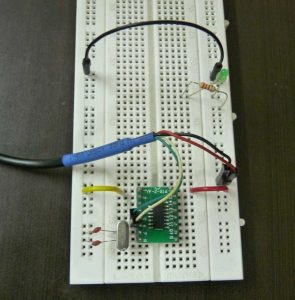Now that the PC’s com port or Serial port is almost obsolete there is quite a lot of requirement for USB to TTL or USB to RS232 converter. USB to TTL converters are required for interfacing microcontrollers to PC it is also required for loading code in Arduino Mini, setting/modifying ESP8266 firmware. Over here we are going to make a do it yourself (DIY) USB to TTL Module on a breadboard.
Lots of USB to TTL modules are available in the market based on various chips like PL2303, FT232, CP2102 and CH340g. I have decided to use CH340g IC. Low costing clones of Arduino UNO & Arduino Nano also uses CH340g IC. And this IC is now easily available in India. Reasons for not using other converter IC’s.
- PL2303: Lots of duplicates in Market so not reliable
- FT232: Costly
- CP2102: Difficult to solder
Step 1: Components Used
Components Used in Projects
- CH340G Usb to TTL converter IC
- 16 pin smd to dip converter
- Breadboard
- Male to Male jumper wires
- USB A to B Cable
- Led’s
- Resistors
Step 2: Schematic
Above is the implemented schematic. The schematic I got from CH340g in Eagle. Not much explanation is required as its a very simple circuit. Still if you have any queries you are free to ask.
Step 3: CH340 USB to TTL Converter
CH340g is a great new low cost alternative to other usb to ttl converter IC’s. It is also gaining lot of popularity andhas support for window’s 8, windows 10 and all OSX for MAC. It is very easy to Install and Tutorials are available for installing CH340 drivers for windows and also for MAC.
Step 4: SMD to DIP Converter
Truly speaking this converter board is the only reason that it was possible to make this project. The problem in using CH340 was that it does not come in DIP version only smd versions are available. But luckily I found a 16 pin SMD to DIP converter which made this project possible. Now using SMD IC’s is not a problem at all as variety of SMD to DIP converter PCB’s are available online.
Read more: DIY USB to TTL Converter

